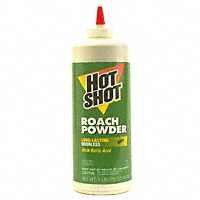Wal Mart sells some carpenter ant powder you spread around the tree. It works pretty good. They have been hard for me to get rid of. They will move from tree to tree. to avoid the poison.
Tomtrees....if you can glance back at my original post, you will see that I stated, "I want to keep it".
Tree is in the front of my house and is a full thick healthy tree, right now. I'm not going to cut down a healthy tree.

THE "trick" we learned about baiting ants is to use so little that they don't avoid the poison but 'eat' it and take it back to the colony. It really subtle point. There has to be enough boric acid to kill the colony but not so much that they avoid the mixture of food and poison or die before they get it back to the colony.
Start with slightly too much boric acid. If they avoid it the mixture is too strong. Important point here, they leave scent trails of safe areas, areas to avoid and the location of food. So, if they are avoiding an area because there's too much poison, a new weaker batch should be placed in a different place - doesn't have to be far away.
When your mixture causes some of them to die or wobble around like they are "drunk", it's only slightly too strong. Then mix up yet another batch, just a little weaker. Once you get it right there will be a large number of ants feeding and a stream of them to and from the colony. Then one of two things will happen. They will stop feeding either because: 1) the colony is dead. 2) or, they have fulfilled their need of sugar and are looking for a source of protein. Most likely because the colony is dead. If they don't take the jelly/boric mix try tuna/boric mix.
We've also tried it the other way 'round. Set out food (no boric) to get their attention. Then add poison 'til they start to 'wobble' and back-off the mix.
I know is a pain in the :censored:, but it works for us. It's only worth all the time and trouble when you've got something really valuable to save from carpenter ants. We haven't found any commercial product that works this well. I'd
really be interested in more detail about the stuff
stihl sawing mentioned.
Keep a close watch on the leaves and branches. Healthy looking leaves are easy to monitor. Branch problems are much much harder to monitor. Pay particular attention that the branches flex and sway in the wind. If a branch stops flexing it's usually a sign that it's begun to dry up and is likely to catastrophically fail and hit the house, a car or worse. As long as tree stays healthy - I wouldn't cut it down, either.
But, you've got to set the priorities about what is safe.
tomtrees58 could be right. It might be worth it to have a pro you trust (not just selling you) examine the tree to determine if it's structurally safe. State foresters or your county agricultural extention service will generally give you an unbiased assessment.






